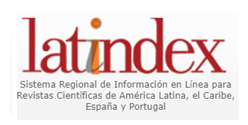KNOWLEDGE TRANSFORMATION AND CONSTRUCTION IN THE DIGITAL AGE: THE ROLE OF THE TEACHER IN THE USE OF AI IN CLASSROOMS
DOI:
https://doi.org/10.56219/dialctica.v1i25.3869Keywords:
Artificial Intelligence (AI), Educational Technology, Teaching, LearningAbstract
This article explores the impact of artificial intelligence (AI) on the teaching and learning process, highlighting the role of teachers as mediators in its integration into the educational sphere. It provides a historical overview of the evolution of AI, from its early conceptualizations in literature texts, to the pioneering scientific developments to evaluate the ability of machines to mimic human intelligence. The article also addresses key points in AI development, such as the emergence of expert systems and advances in deep learning. AI offers diverse perspectives in the educational context, such as personalized learning and optimizing teaching through digital tools, but also poses significant challenges, including the potential dehumanization of the educational process, technological dependence, and the need to ensure the privacy and security of students' data. Therefore. AI should be conceived as a complementary tool in education, never as a substitute for teachers. Some platforms have already validated their usefulness for optimizing teaching, where human mediation remains essential to ensure the integral development of learners. The success of AI integration in education will depend on a balance between technology and teaching, ensuring that learning continues to be a human, reflective, and socially meaningful process.
Downloads
References
Asimov, I. (1950). Yo, Robot. Nueva York: Editorial Doubleday, https://ia804506.us.archive.org/9/items/5-robots-e-imperio-isaac-asimov/1%20Yo%2C%20Robot%20-%20Isaac%20Asimov.pdf
Ausubel, D.P. (1976). Psicología educativa: un punto de vista cognoscitivo. México, Editorial Trillas. Traducción al español de Roberto Helier D., de la primera edición de Educational psychology: a cognitive view.
Dewey, J. (1938). Experience and Education. Nueva York: Macmillan.
Estrada Tangarife, L. (2024) El impacto de la inteligencia artificial en la enseñanza de las matemáticas en la educación básica secundaria: una revisión crítica. Universidad Nacional de Colombia, Facultad de ciencias. https://repositorio.unal.edu.co/handle/unal/86594.
Selwyn, N. (2019). Should robots replace teachers? AI and the future of education. Polity Press.
Schleicher, A. (2018). World class: How to build a 21st-century school system. OECD Publishing. DOI: https://doi.org/10.1787/9789264300002-en
Freire, P. (1970). Pedagogía del oprimido. Montevideo: Siglo XXI Editores.
Parra Sanchez, J. (2022) Potencialidades de la Inteligencia Artificial en Educación Superior: Un enfoque desde la Personalización. Revista Tecnología Educativa Docente 2.0, 14(1). 19-27. https://doi.org/10.37843/rted.v14i1.296 DOI: https://doi.org/10.37843/rted.v14i1.296
Pérez et al. (2024). Implicaciones filosóficas, éticas y pedagógicas del uso de la Inteligencia Artificial en educación. Dialnet. https://dialnet.unirioja.es/servlet/articulo?codigo=9624296
Perkins, D. (1992). Smart Schools: Better Thinking and Learning for Every Child. New York: The Free Press.
Gardner, H. (1983). Frames of mind: The theory of multiple intelligences. Basic Books.
Piaget, J. (1970). The Science of Education and the Psychology of the Child. New York: Viking Press.
Sadin, E. (2020). La humanidad aumentada: La administración digital del mundo. Madrid: Caja Negra Editores.
Nussbaum, M. C. (2010). Sin fines de lucro: Por qué la democracia necesita de las humanidades. Katz Editores. DOI: https://doi.org/10.2307/j.ctvndv60c
Turing, A. M. (1950). Computing Machinery and Intelligence. Mind, 59(236), 433–460. http://xamanek.izt.uam.mx/map/cursos/Turing-Pensar.pdf DOI: https://doi.org/10.1093/mind/LIX.236.433
Vygotsky, L. S. (1978). Mind in Society: The Development of Higher Psychological Processes. Cambridge, MA: Harvard University Press.
Downloads
Published
How to Cite
Issue
Section
License
Copyright (c) 2025 DIALÉCTICA

This work is licensed under a Creative Commons Attribution-NonCommercial-ShareAlike 4.0 International License.
La revista Dialéctica conserva los derechos patrimoniales (copyright) de las obras publicadas, que favorece y permite la reutilización de los mismos bajo la licencia Creative Commons Atribución-NoComercial-CompartirIgual 4.0 , por lo cual se pueden copiar, usar, difundir, transmitir y exponer públicamente, siempre que se cite la autoría y fuente original de su publicación (revista, editorial, URL y DOI de la obra), no se usen para fines comerciales u onerosos y se mencione la existencia y especificaciones de esta licencia de uso. Si remezcla, transforma o crea a partir del material, debe distribuir su contribución bajo la misma licencia del original.












